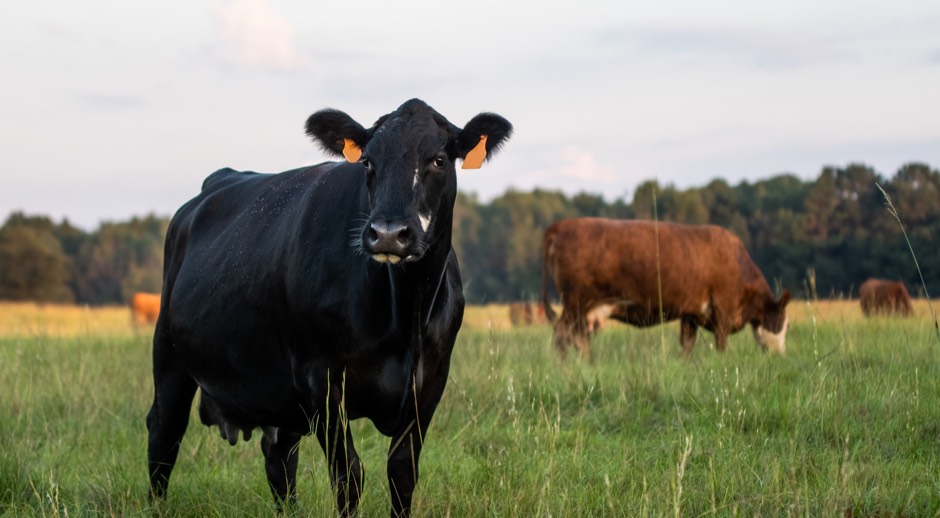At 24 West, we feed our cattle nothing but grass and grass hay/alfalfa mix.
They graze in the Dry Creek Valley, then move to our pastures in Donnelly and eat hay that was grown on our ranch. Grass-fed ranching practices are not only sustainable and humane, but they produce a leaner, healthier cut of beef.
Here are 8 reasons we choose to raise to choose grass-fed beef:
1.
Low in total fat
Grass-fed beef has 2.2 grams of fat per 3 ounce serving, while grain-finished beef has 8.3 grams of fat per 3 ounce serving.*
2.
Low in calories
A 6-ounce steak from a grass-finished steer can have 100 fewer calories than a 6-ounce steak from a grain-fed steer. If you eat a typical amount of beef (66.5 pounds a year), switching to lean grass-fed beef will save you 17,733 calories a year. That equates to over 6 pounds.*
3.
Higher in total omega-3s and lower in saturated fats linked with heart disease
Beef from grass-fed animals has two to four times more omega-3 fatty acids than beef from grain- fed animals. Omega-3s are called “good fats, because they are heart healthy.*
4.
Higher in vitamin E (alpha-tocopherol)
Grass-fed beef has up to four times more Vitamin E as grain-finished beef. Vitamin E is linked with a lower risk of heart disease and cancer.*

5.
Higher in the B-vitamins thiamin and riboflavin, calcium, magnesium and potassium*
6.
No antibiotics or growth hormones
Our grass-fed beef is pure and our animals are left to mature as nature intended. When antibiotics and hormones are given to cattle they are passed onto the consumer, resulting in unnecessary health risks. We simply don’t believe in that. We only administer antibiotics if it is imperative for the animal’s health, at which point we isolate that animal from our herd, so the beef is never processed for our client’s consumption.
7.
Humane practices
Our cattle are never confined to a feed lot or exposed to dangerous and unnatural conditions. They live a natural life on the grassland in the Dry Creek Valley and in our open pastures in Donnelly. We have been certified by Global Animal Partnership (GAP Certified) as a Step 4 Ranch, based on our commitment to our animal’s welfare and living conditions.
8.
Sustainability and Environmental Stewardship
Sustainable ranching is one of hallmarks of 24 West Ranch. Our cattle are fed grass hay that is grown on our ranch. We also practice crop rotation to continually reinvigorate the land.
*Based on a 2009 study, joint effort between the USDA and researchers at Clemson University in South Carolina.S.K. Duckett et al, Journal of Animal Science, (published online) June 2009, “Effects of winter stocker growth rate and finishing system on: III. Tissue proximate, fatty acid, vitamin and cholesterol content.”